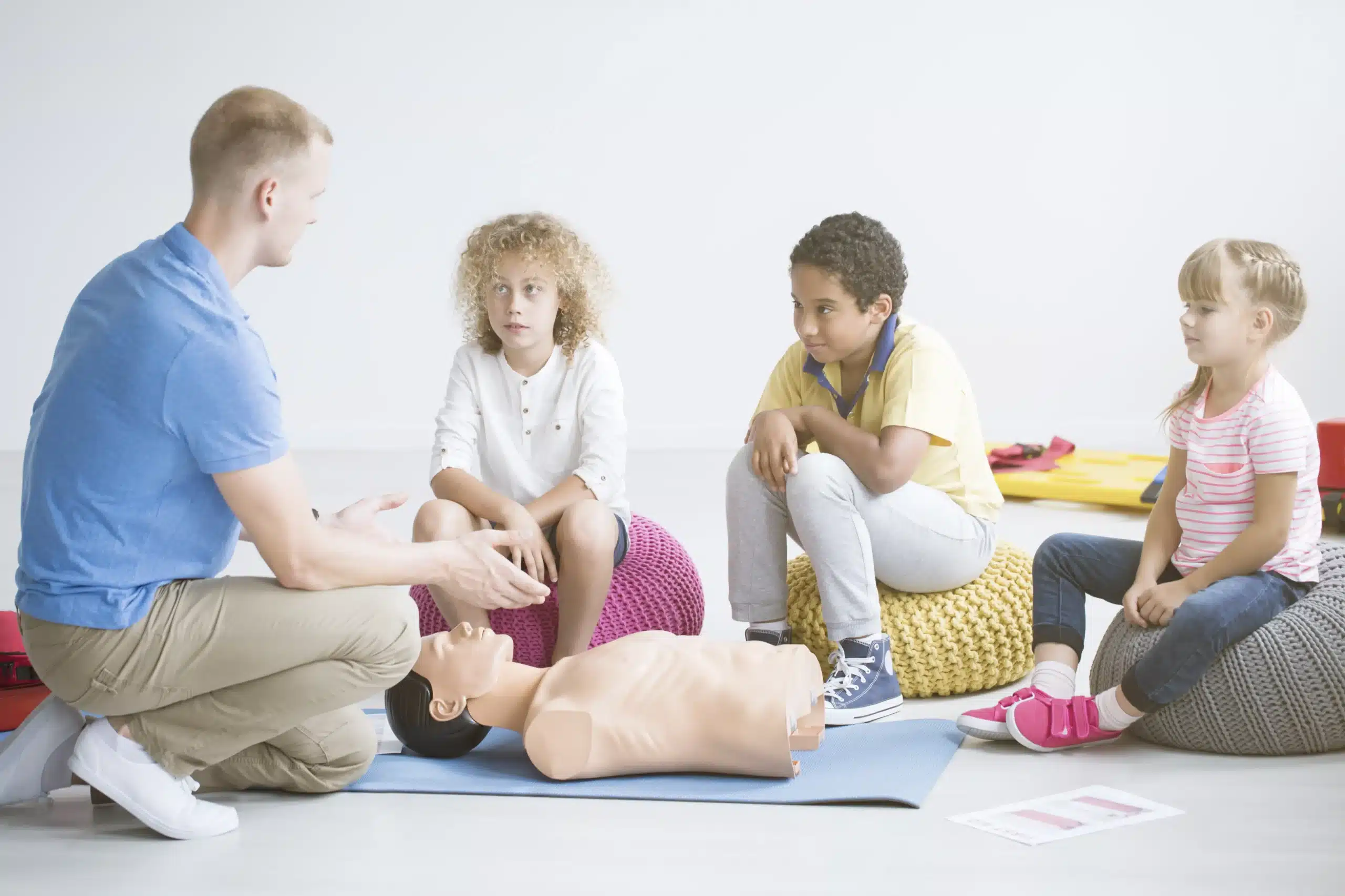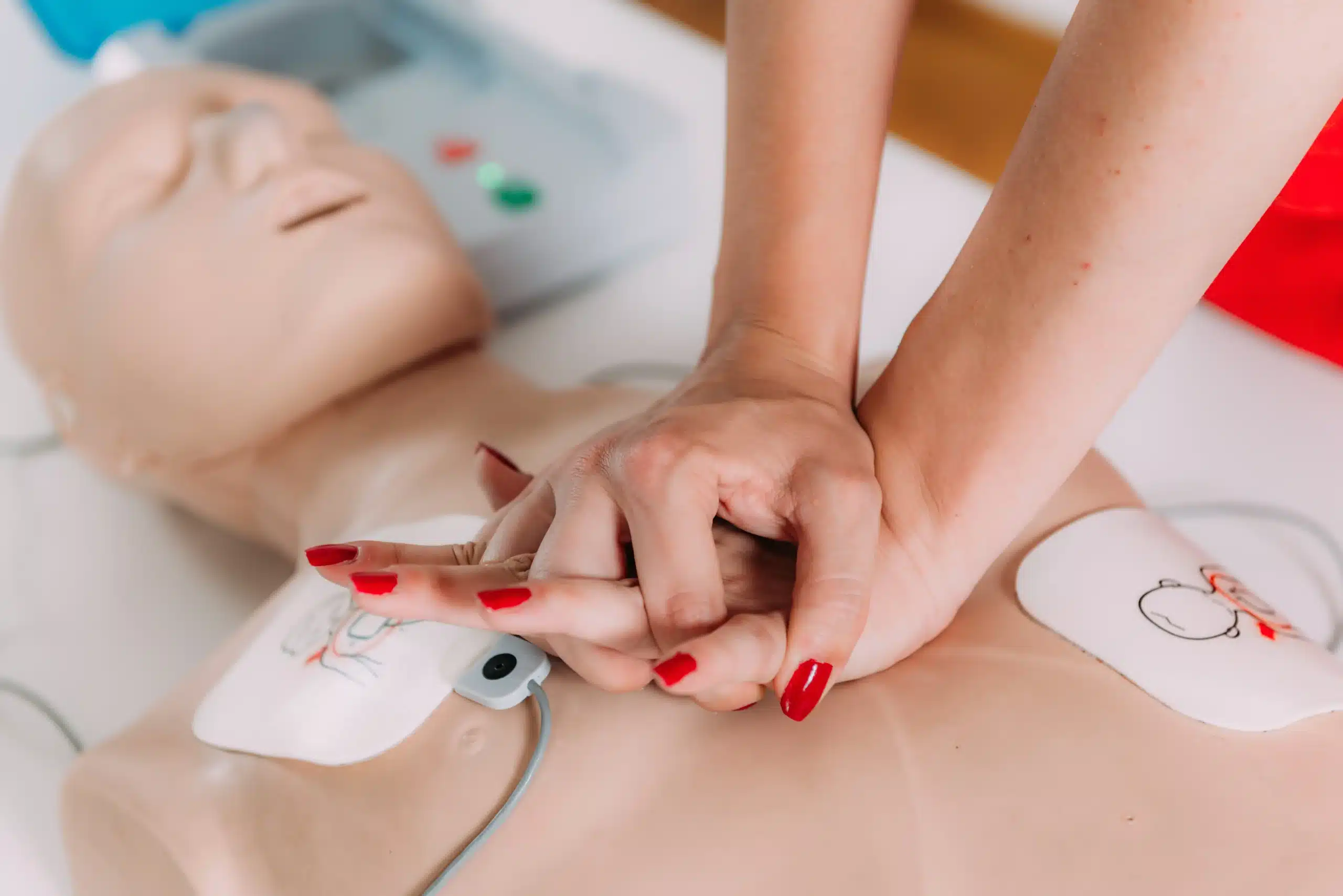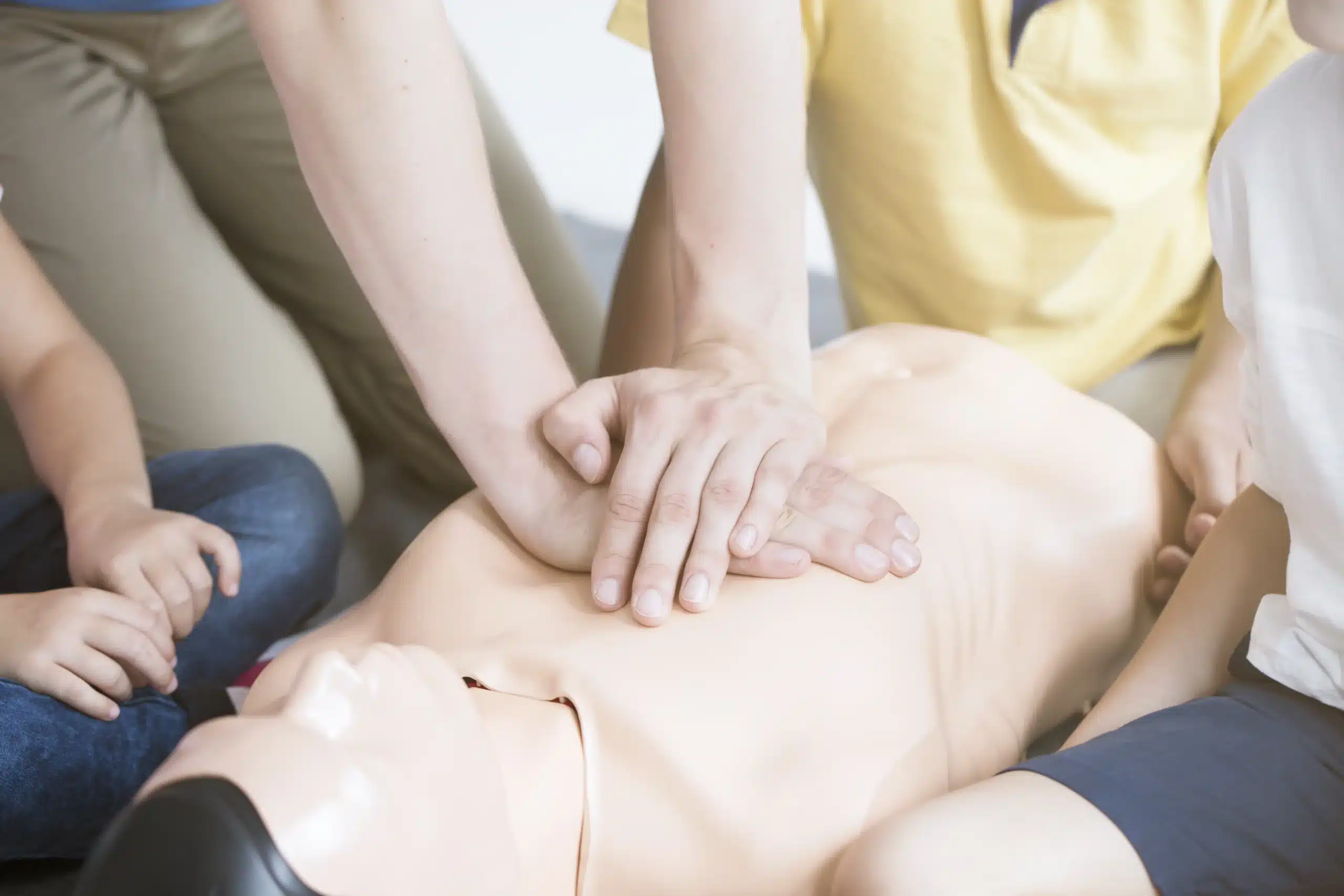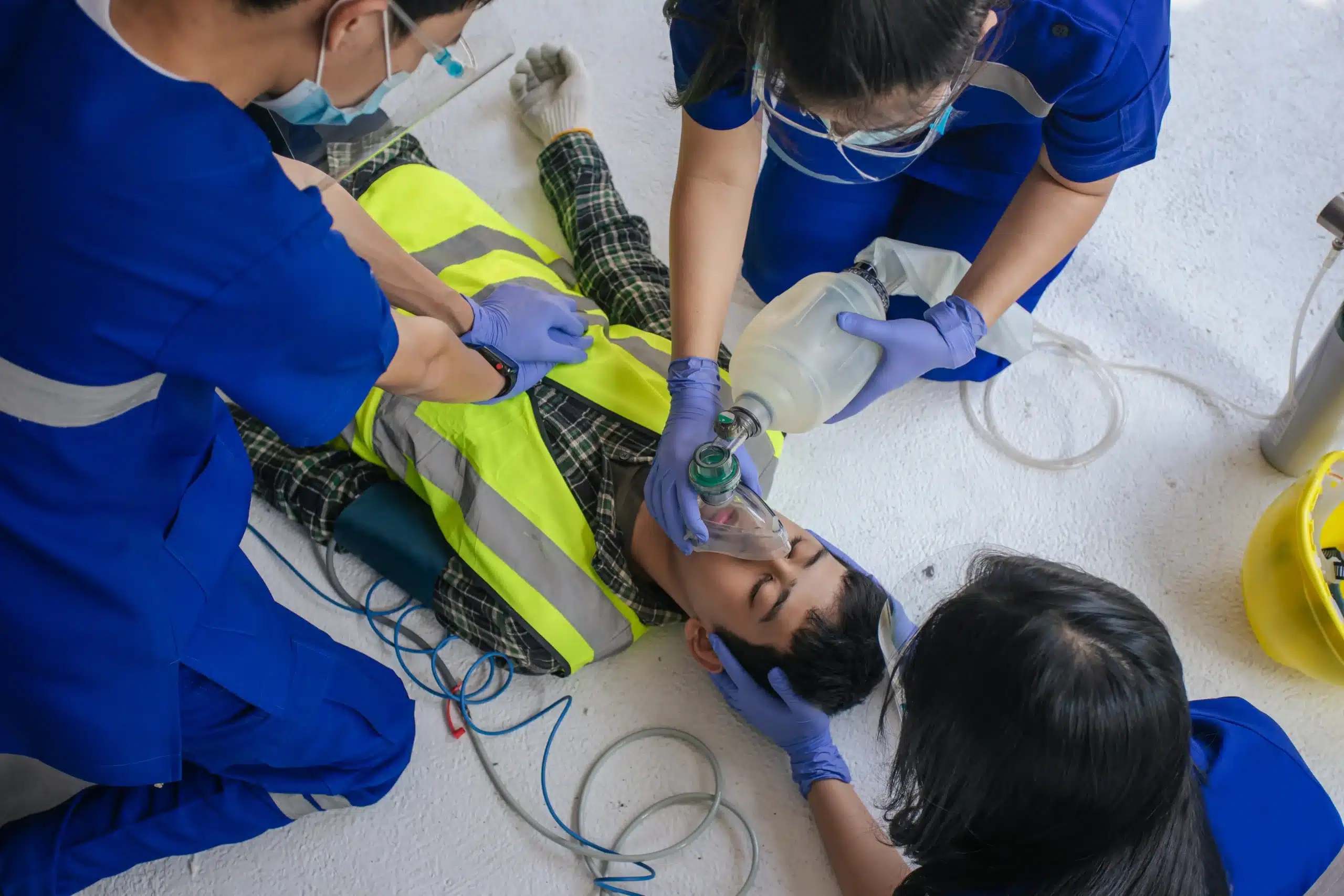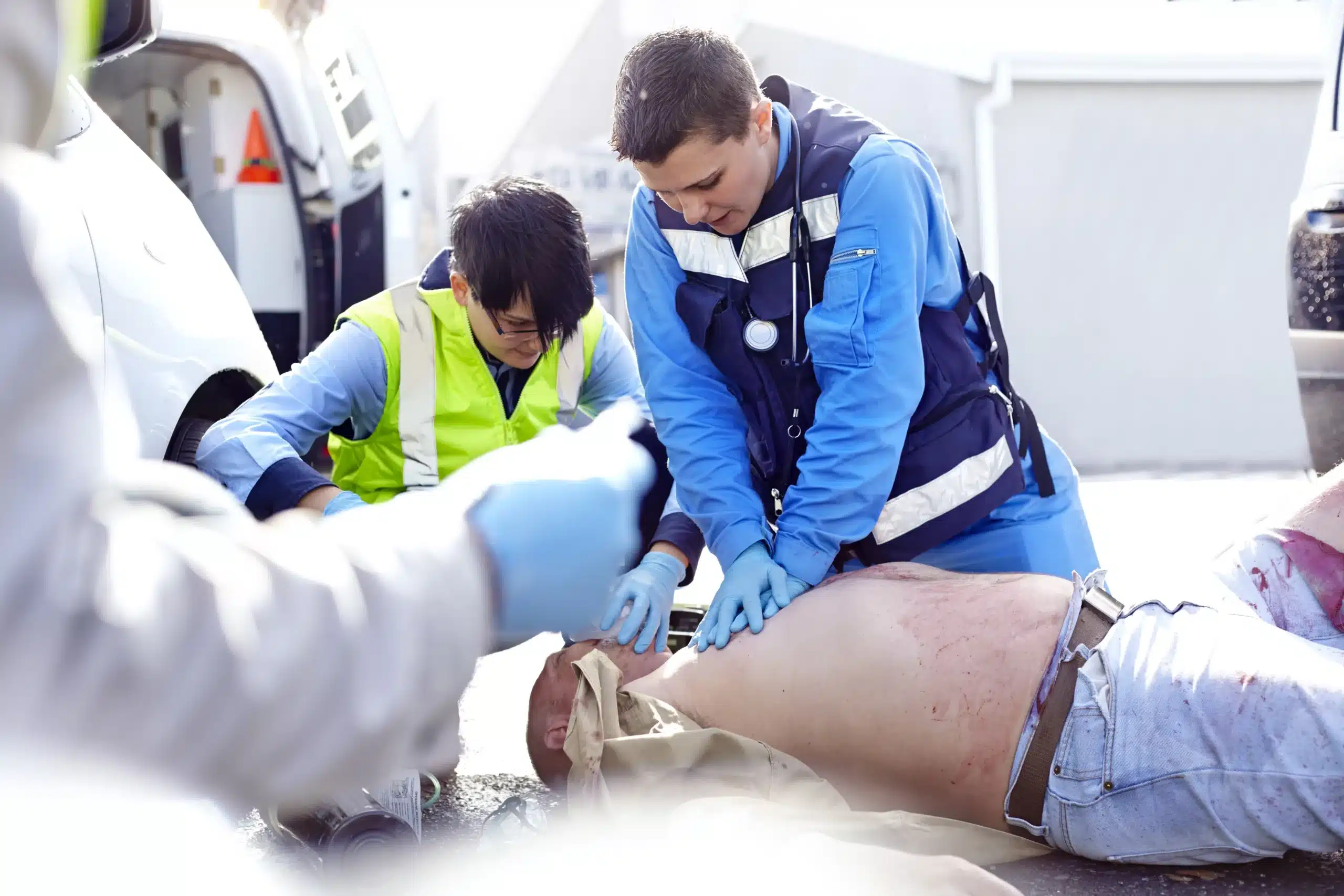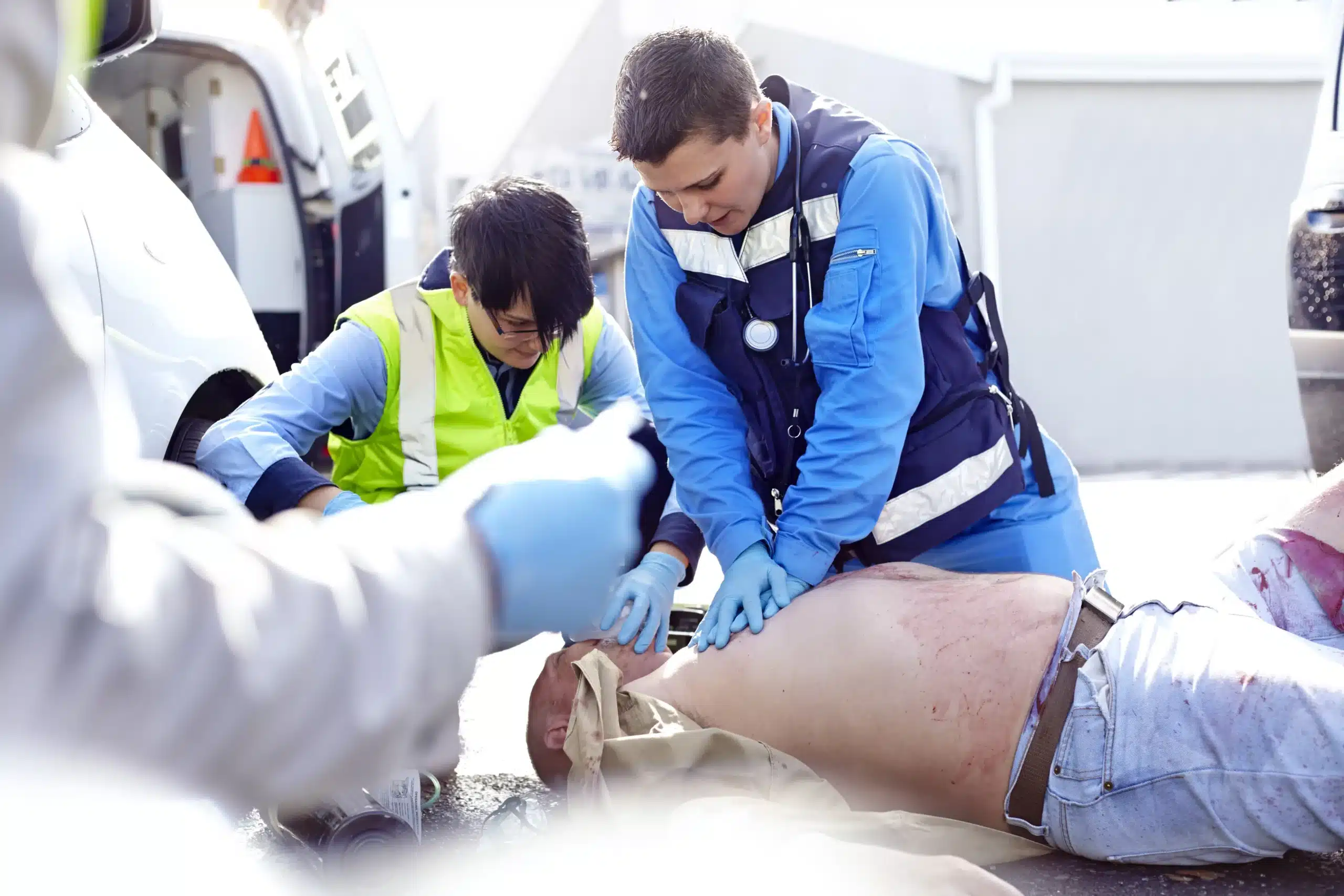Balancing work, family, and other commitments often leaves little room for extra training. But learning CPR is an invaluable skill that can make a real difference in an emergency. Fortunately, online CPR classes in Union City provide a flexible way to fit this essential training into your busy life. This article will guide you through the world of online CPR training, covering everything from course content and costs to finding the right provider in Union City. We’ll also discuss the benefits and challenges of online learning and offer practical tips for maximizing your learning experience. Get ready to gain life-saving skills on your own schedule.
Key Takeaways
- Online CPR training fits your schedule: Learn life-saving skills at your own pace, making it ideal for busy professionals, parents, and anyone with a packed schedule. Supplement online learning with hands-on practice.
- Select a reputable online CPR class: Accreditation from organizations like the American Heart Association or the American Red Cross ensures high-quality training. Consider your specific needs when choosing a course.
- Actively engage with your online CPR training: Participate in interactive exercises, seek supplementary resources, and practice regularly to build confidence and maintain your skills. Consider adding in-person practice.
What are Online CPR Classes?
Online CPR classes teach the techniques of cardiopulmonary resuscitation through digital platforms. This allows students to learn at their own pace and on their own schedule, fitting training around busy lives. It’s a convenient way to gain essential, potentially life-saving skills.
Defining Online CPR Training
Online CPR training delivers instruction on CPR techniques through websites, apps, and other digital platforms. This format offers a flexible alternative to traditional in-person classes, making it easier for people to access this important training. Think of it as learning CPR from the comfort of your own home, at your own speed. You’ll find the same core information as in a traditional class, covering everything from chest compressions and rescue breaths to recognizing the signs of a cardiac arrest. For a helpful comparison of online vs. in-person CPR training, take a look at this article.
Benefits of Online CPR Training
The biggest advantage of online CPR training is its flexibility. You can access course materials from anywhere with an internet connection, making it a great option for busy professionals, parents, or anyone with a packed schedule. This format also allows you to review specific sections as needed, reinforcing your understanding of key concepts. While online training provides the knowledge component, practicing your skills on a physical manikin is crucial for developing muscle memory and proper technique. Studies show that using manikins with feedback enhances engagement and improves CPR performance. So, while you’re learning the basics online, consider supplementing your training with in-person practice sessions.
Types of Online CPR Certifications
Several organizations offer a variety of online CPR certifications. These include Basic Life Support (BLS), Advanced Cardiovascular Life Support (ACLS), and Pediatric Advanced Life Support (PALS), each designed for different professional needs and levels of expertise. Choosing the right certification depends on your specific career goals and the type of emergencies you’re likely to encounter.
Top Online CPR Class Providers in Union City
Finding the right online CPR class can feel overwhelming with so many options. To help you narrow your search, we’ve compiled a list of reputable providers offering online CPR certification in Union City. Remember to verify that the certification you choose meets your specific requirements.
American Red Cross
The American Red Cross offers a blended learning approach to CPR certification, combining online coursework with in-person skills sessions. This allows you to learn the basics at your own pace before practicing techniques with a certified instructor. Check the Red Cross website for course availability and schedules in your area. They offer various certifications, including First Aid, CPR, and AED training.
Hayward CPR Classes
Hayward CPR Classes provides a variety of American Heart Association (AHA) certified courses, including BLS, ACLS, PALS, and CPR/First Aid. They emphasize accessible, high-quality training with convenient scheduling and competitive pricing. Learn more about their CPR certification options in Union City. Their focus on AHA certifications ensures you receive training aligned with industry standards.
National CPR Foundation
The National CPR Foundation (NCPRF) offers online CPR certification courses that meet the guidelines established by the AHA, ILCOR, and OSHA. Their accreditation ensures the training you receive is comprehensive and recognized by employers and regulatory bodies. They provide a range of courses to suit different needs, from basic CPR to more advanced certifications.
ProTrainings
ProTrainings offers a wide selection of online CPR courses, including CPR Only, CPR/First Aid, and Healthcare BLS. With numerous customer reviews and a high rating, they’ve built a reputation for accessible and affordable online training. Their platform is designed for self-paced learning, allowing you to complete the coursework on your schedule.
American Heart Association
While the AHA doesn’t directly offer online-only CPR courses, they set the standards for CPR training nationwide. Many organizations, including Hayward CPR Classes, offer AHA-certified courses that meet these rigorous standards. Choosing an AHA-certified course ensures you receive high-quality, widely-accepted training.
Explore the Format of Online CPR Courses
Online CPR courses offer a convenient way to learn lifesaving skills, but it’s helpful to understand how they work before you sign up. Here’s what you can expect from a typical online CPR class:
Self-Paced Learning
Juggling work, family, and other commitments? Online CPR classes offer the flexibility of self-paced learning. You can complete the coursework on your own schedule, fitting it in whenever you have free time. This format is especially beneficial for busy professionals, parents, and students. No more rigid class times—learn at your own speed. Starting Hearts offers a helpful comparison of online versus in-person CPR classes to help you decide which format is right for you.
Video Instruction and Interactive Modules
Most online CPR courses use engaging multimedia to teach essential concepts and techniques. Expect high-quality video instruction demonstrating CPR procedures, along with interactive modules and quizzes to reinforce your learning. This approach makes learning more engaging and helps you retain information effectively. The American AED CPR Association is one example of a provider that uses this type of engaging content.
Hands-On Skills Assessment
While online courses excel at teaching theory, they often lack the hands-on component crucial for mastering CPR. As ProTrainings points out, one common issue is that learners don’t receive direct feedback from an instructor. Many online CPR certifications require an in-person skills assessment with a certified instructor to complete the certification process. This blended approach ensures you develop the practical skills necessary to perform CPR effectively in a real-life emergency.
Course Duration and Topics Covered
The length of an online CPR course varies depending on the provider and the specific topics covered. Some courses focus solely on adult CPR, while others include infant and child CPR, AED training, and first aid. Online Basic Life Support (BLS) classes are a good example of this variation in course content. When choosing a course, consider your specific needs and the requirements of your workplace or profession.
Get Certified and Recertified
Getting CPR certified is an investment in yourself and your community. Whether you’re getting certified for the first time or renewing your existing credentials, understanding the process and available options is key. Here at Hayward CPR Classes, we offer a variety of American Heart Association certification courses to meet your needs.
Get Your Initial Certification
Taking a CPR class for the first time can feel a little daunting, but it’s a straightforward process. First, find a reputable provider like Hayward CPR Classes offering courses that fit your schedule. We offer classes daily in over 60 cities, making it easy to find a convenient time and location. Our courses cover essential life-saving techniques, including CPR, First Aid, and how to use an AED. You’ll learn in a supportive environment with experienced instructors who guide you through the material and answer any questions. After successfully completing the course, you’ll receive your certification, empowering you to respond confidently in an emergency.
Renew Your Certification
It’s essential to keep your CPR skills sharp. Like any skill, CPR techniques can decline over time, which is why recertification is so important. Even if your certification has lapsed, remember that attempting CPR is always better than doing nothing if you encounter a medical emergency. Regularly refreshing your knowledge and skills ensures you’re prepared to provide effective assistance when it matters most. Hayward CPR Classes offers convenient recertification courses to help you stay current.
Industry Standards and Recognition
The quality of your CPR training matters. Look for courses that align with nationally recognized guidelines, such as those offered by the American Heart Association. Hayward CPR Classes is a woman-owned AHA Training Center, meaning our courses meet these rigorous standards. This ensures your certification is widely accepted and respected. We also offer group discounts, making high-quality training accessible and affordable. Whether you need BLS or ACLS certification, we provide the training you need to meet industry requirements and feel confident in your abilities. For any questions or to learn more about our programs, please contact us.
Understand CPR Class Costs
CPR class costs in Union City depend on a few factors: the type of course, the training provider, and whether you’re learning solo or with a group. Understanding these factors will help you budget effectively and find the best value for your training.
Average Pricing for Different Certifications
While a basic CPR and AED course provides foundational life-saving skills, additional certifications like BLS (Basic Life Support) often have a more specialized curriculum, impacting the overall cost. For example, BLS certification is frequently required for healthcare providers and may include more advanced techniques. Hayward CPR Classes offers a range of American Heart Association certifications, including BLS. Similarly, certifications like ACLS (Advanced Cardiovascular Life Support) or PALS (Pediatric Advanced Life Support) will typically be more expensive due to their specialized focus. Checking directly with the training center is always recommended for the most up-to-date pricing.
Group Discounts and Promotions
If you’re training with a group, such as colleagues or a community organization, ask about group discounts. Many providers, including Hayward CPR Classes, offer reduced rates for group instruction. This can be a smart way to make training more affordable and build camaraderie. Also, keep an eye out for seasonal promotions or special offers that can help lower the cost.
Hidden Costs to Watch Out For
Beyond the course fee itself, consider potential additional expenses. Some providers might charge extra for certification cards, study materials, or online access codes. Factoring these potential costs into your budget avoids surprises. Consider your profession and any required certifications when selecting a course. Healthcare providers, for instance, often need BLS certification, which may have a different price than basic CPR training. Choosing the right course from the start ensures you receive the appropriate training. Contact Hayward CPR Classes to discuss your specific needs and find the right course for you.
Choose the Right Online CPR Class
Finding the right online CPR class involves considering a few key factors to ensure it meets your needs and provides a valuable learning experience. Here’s what to look for:
Accreditation and Recognition
First things first, confirm the course is accredited by a recognized organization like the American Heart Association (AHA) or the American Red Cross. This ensures the training aligns with established standards and is widely accepted, especially important if your job requires certification. Many employers will specify which certifications they accept, so check with your workplace or desired employer. A recognized certification demonstrates a commitment to quality and gives your credentials weight.
Course Content and Comprehensiveness
A good online CPR class should cover the essentials, like adult, child, and infant CPR, the DRSABCD protocol (Danger, Response, Send for help, Airway, Breathing, CPR, Defibrillation), and how to use an Automated External Defibrillator (AED). Some courses also include First Aid and Bloodborne Pathogens training, which can be valuable additions to your skillset. Look for a course that offers a comprehensive curriculum relevant to your specific needs. For example, healthcare providers might require more in-depth training than someone seeking certification for personal knowledge. Hayward CPR Classes offers a range of courses to meet different requirements.
Flexibility and Accessibility
One of the biggest perks of online learning is flexibility. You can learn at your own pace and fit the training around your schedule. Look for courses that offer 24/7 access and are compatible with different devices (phones, tablets, laptops). This allows you to study whenever and wherever it’s convenient for you. If you’re in the Union City area, online BLS classes offer a convenient way to get certified. Group discounts are also available for businesses and organizations.
User Reviews and Testimonials
Before committing to a course, check out reviews and testimonials from other students. These can offer valuable insights into the quality of instruction, the platform’s user-friendliness, and the overall learning experience. Look for comments that mention the clarity of the materials, the responsiveness of instructors (if applicable), and the effectiveness of the training. Positive feedback can give you confidence that you’re choosing a reputable and worthwhile course. You can often find these reviews on the course provider’s website or independent review platforms. If you have any questions, don’t hesitate to contact us.
Overcome Online CPR Learning Challenges
Online CPR training offers flexibility and convenience, but it also presents unique challenges. Let’s explore some common hurdles and how to overcome them.
Get Feedback
One drawback of online CPR classes is the lack of immediate, personalized feedback. In a traditional classroom setting, an instructor observes your technique and provides real-time corrections. This direct feedback is crucial for mastering hands-on skills like chest compressions and rescue breaths. To address this in an online environment, consider practicing with a friend or family member who can offer observations. Even better, supplement your online training with an in-person skills session. Many providers, including Hayward CPR Classes, offer these sessions to bridge the gap and ensure competency.
Stay Motivated and Engaged
It’s easy to get sidetracked with self-paced learning. Research shows that feedback, especially when connected to performance metrics (like those from training mannequins), significantly increases motivation. Set specific learning goals for each session, create a dedicated study space free from distractions, and consider using a timer to maintain focus. Reward yourself for completing modules to build positive study habits.
Apply Practical Skills
Online learning excels at delivering information, but applying that knowledge requires hands-on practice. While online courses often include videos and simulations, nothing replaces physical practice. Invest in an affordable CPR manikin to practice your compressions and ventilation techniques. This hands-on practice will solidify your skills and build confidence. You can find these on Amazon or through various medical supply companies.
Leverage Interactive Tools and Resources
Many online CPR courses incorporate interactive elements like quizzes, simulations, and virtual scenarios. Take full advantage of these learning tools. They offer a safe environment to make mistakes, learn from them, and reinforce key concepts. Look for courses that offer a blended learning model, combining online instruction with opportunities for in-person skills practice and assessment. This approach provides a well-rounded learning experience.
Maximize Your Online CPR Training
Getting the most out of your online CPR training involves a bit of planning and ongoing effort. Here’s how to approach online learning for CPR and make it a truly valuable experience:
Prepare Technically
Before you even begin your online CPR training, ensure you have the right technical setup. This includes a reliable internet connection, a computer or tablet with working speakers and a microphone (if your course has live components), and a quiet space free from distractions. One common challenge with online CPR classes is the lack of direct instructor feedback on hands-on skills. While you’ll learn the techniques through video, practicing correct form is crucial. Consider having a friend or family member observe your practice and provide feedback, or record yourself to self-assess.
Manage Your Time
Online learning offers flexibility, but it also requires self-discipline. Online BLS certification allows you to learn at your own pace, but creating a realistic study schedule and sticking to it is important. Break down the course material into manageable chunks and dedicate specific times for studying. Treat your online CPR training like any other important appointment.
Find Supplementary Learning Resources
While your online CPR course will provide core information, seeking out supplementary resources can deepen your understanding and improve your skills. Look for reputable organizations like the American Heart Association that offer additional materials, videos, and practice scenarios. Detailed feedback, even from resources like practice apps or instructional videos, can significantly improve CPR quality.
Maintain Your Skills
CPR certification isn’t a one-and-done deal. Regular practice and refresher courses are essential to maintain your skills and confidence. The flexibility of online learning makes staying up-to-date easier than ever. Explore online RQI certification or set reminders to review key techniques periodically. This ongoing learning will ensure you’re always prepared to respond effectively in an emergency.
Related Articles
- CPR Courses in Hayward: Find the Right Class for You – Hayward CPR Classes
- Why CPR is Crucial in Healthcare
- CPR Certification in Union City: Your Guide – Hayward CPR Classes
- Online PALS Classes in Union City: Your Guide – Hayward CPR Classes
- PALS Certification in Union City: Your Guide to Courses & Providers – Hayward CPR Classes
Frequently Asked Questions
Is online CPR certification enough, or do I need in-person training too?
Online CPR certification provides a solid foundation in the knowledge and techniques of CPR. However, it’s essential to supplement this with hands-on practice. Many certifying organizations require an in-person skills assessment to complete your certification, ensuring you can perform CPR effectively in a real-life situation. Think of the online portion as your study guide and the in-person component as your practical exam.
How long does it take to complete an online CPR course?
The beauty of online learning is its flexibility. You can usually complete the coursework at your own pace, fitting it around your schedule. While the actual time varies depending on the specific course and provider, many online CPR courses can be finished within a few hours. Some providers also offer expedited options if you need certification quickly.
How much does an online CPR class cost?
The cost of an online CPR class depends on several factors, including the level of certification (basic CPR, BLS, ACLS, etc.), the provider, and whether any in-person components are required. Look for providers who offer transparent pricing and explore options like group discounts if you’re training with others. It’s always a good idea to contact the provider directly to discuss your specific needs and get an accurate price quote.
How do I choose the right online CPR class for me?
Choosing the right online CPR class involves considering your specific needs and goals. Look for courses accredited by reputable organizations like the American Heart Association or the American Red Cross. Check reviews and testimonials to gauge the quality of the instruction and platform. Think about the course content, ensuring it covers the topics relevant to your situation. And, of course, consider the flexibility and accessibility of the course, opting for one that fits your schedule and learning style.
What if I have trouble staying motivated with online learning?
Staying motivated with online learning requires a bit of self-discipline. Create a dedicated study space, set realistic goals for each session, and use tools like timers to maintain focus. Consider finding a study buddy for accountability or rewarding yourself for completing modules. Remember why you’re taking the course in the first place – to gain a valuable life-saving skill – and keep that motivation at the forefront.
